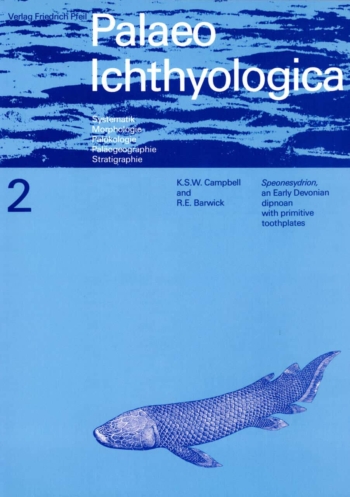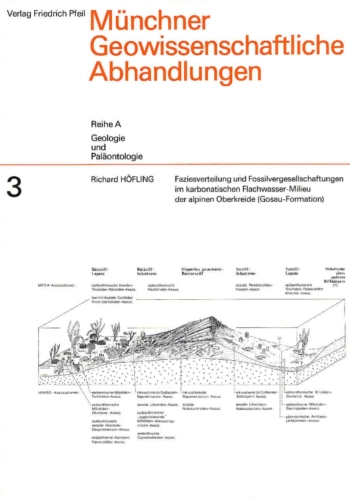Teeth are the hardest and most durable parts of the mammalian body. Even after millions of years they provide a wealth of paleobiologic information. Teeth reflect the interaction of mammals with the environment, as evident from their shape and traces of mastication on their surface. Teeth of fossil and extant mammals provide information on the diet, mode of food processing, biomechanics of mastication, and energy gain. Modern analytical and visualization techniques such as micro-computed tomography, high-resolution surface analysis, and 3D imaging have greatly boosted the research on dental function in recent years. The book “Mammalian Teeth – Form and Function” offers a comprehensive synopsis of the latest advances in the field of dental function research. It will be of interest not only to paleontologists and biologists, but also to students and scholars in archeology, animal nutrition, and dentistry.
Mammalian Teeth
2021. [Englisch] – 248 Seiten, 115 Farb- und 20 Schwarzweißabbildungen, 34 Tabellen.
30,3 × 21,3 cm, Hardcover.
78,00 €
zzgl. Versandkosten / Versandkostenfrei in D
Preface (p. 7)
Authors (p. 7-10)
Occlusion and Wear
1 Julia A. Schultz, Ulrike Anders, Caroline Braune, Janka J. Brinkkötter, Ivan Calandra, Sandra Engels, Eva Findeisen, Juan Pablo Gailer, Jürgen Hummel, Kai R. K. Jäger, Thomas M. Kaiser, Daniela C. Kalthoff, Wighart v. Koenigswald, Ottmar Kullmer, Christina Landwehr, Markus Mau, Ulrike Menz, Irina Ruf, Anne M. Schubert, Ellen Schulz-Kornas, Achim H. Schwermann, Leonie C. Schwermann, Mirella Skiba, Patrick Steuer, Karl-Heinz Südekum, Daniela E. Winkler, and Thomas Martin: A new wear facet terminology for mammalian dentitions (p. 11-24) PDF
2 Ottmar Kullmer, Ulrike Menz, and Luca Fiorenza: Occlusal Fingerprint Analysis (OFA) reveals dental occlusal behavior in primate molars (p. 25-43) PDF
3 Ellen Schulz-Kornas, Thomas M. Kaiser, Ivan Calandra, and Daniela E. Winkler: A brief history of quantitative wear analyses with an appeal for a holistic view on dental wear processes (p. 44-53) PDF
Mastication and Jaw Mechanics
4 Jordi Marcé-Nogué: Mandibular biomechanics as a key factor to understand diet in mammals (p. 54-80) PDF
5 Marcus Mau, Achim Johann, Thomas M. Kaiser, and Karl-Heinz Südekum: Interaction between food, saliva, and tooth surface (p. 81-86) PDF
6 Jürgen Hummel, Marcus Clauss, and Karl-Heinz Südekum: Aspects of food comminution in ungulates and their consequences for energy budget (p. 87-101) PDF
Ontogeny and Heterochrony
7 Irina Ruf, Anne M. Schubert, and Wighart v. Koenigswald: Case studies on functional aspects and constraints in early and late tooth ontogeny (p. 102-124) PDF
8 Daniela E. Winkler, Jordi Marcé-Nogué, and Thomas M. Kaiser: Enamel ridge alignments in ungulates: a cut above (p. 125-170) PDF
9 Wighart v. Koenigswald: Construction and wear of mammalian teeth in terms of heterochrony (p. 171-186) PDF
Evolutionary Changes
10 Thomas Martin, Kai R. K. Jäger, Thorsten Plogschties, Achim H. Schwermann, Janka J. Brinkkötter, and Julia A. Schultz: Molar diversity and functional adaptations in Mesozoic mammals (p. 187-214) PDF
11 Julia A. Schultz, Sandra Engels, Leonie C. Schwermann, and Wighart v. Koenigswald: Evolutionary trends in the mastication patterns in some perissodactyls, cetartiodactyls, and proboscideans (p. 215-230) PDF
12 Daniela Kalthoff: Short review of dental microstructure and dental microwear in xenarthran teeth (p. 231-241) PDF
Index (p. 243-248)
Teeth are the hardest and most durable parts of the mammalian body. Even after millions of years they provide a wealth of paleobiologic information. Teeth reflect the interaction of a mammal with the environment, as evident from their shape and traces of mastication on their surface. Teeth provide information on the diet, mode of food processing, biomechanics of mastication, and energy gain. Modern analytical techniques such as micro-computed tomography, high-resolution surface analysis, and 3D imaging have greatly boosted the research on dental function in recent years. They reveal sub-microscopic surface structures such as striations and micro-textures in great detail, providing insight into dietary adaptations of long-extinct mammalian clades. The shortcomings of 2D imaging that formerly have hampered the depiction of complex occlusal relationships have been overcome by 3D analysis and virtual modelling of the chewing cycle with the Occlusal Fingerprint Analyser (OFA) software.
The DFG Research Unit 771 “Function and performance enhancement in the mammalian dentition – phylogenetic and ontogenetic impact on the masticatory apparatus” has been active since 2008, with groups at the University of Bonn, the Senckenberg Research Institute and Natural History Museum Frankfurt, the Zoological Museum of the University of Hamburg and the Natural History Museum in Stockholm. In the framework of Research Unit 771 an interdisciplinary group of researchers from paleontology, zoology, anthropology, animal nutrition and biomechanics bundled their expertise and efforts for the study of the function of the mammalian dentition. Results of the Research Unit have been presented and discussed at various conferences and at the international workshop “Abrasion and Attrition: Traces of Mastication in Fossil Mammals”, held in Mayschoß (Ahr Valley) in 2014.
The book “Mammalian Teeth – Form and Function” is a synopsis of the achievements of Research Unit 771 which have been published in more than 100 technical papers in many different journals. In order to make the general results more accessible for non-specialists, they have been cast in 12 chapters arranged according to four major research areas: Occlusion and Wear, Mastication and Jaw Mechanics, Ontogeny and Heterochrony, and Evolutionary Changes. These chapters are based on the published papers of the Research Unit, which are marked with an asterisk (*) in the respective reference lists.
The German Research Foundation (DFG) has generously funded Research Unit 771 and the publication of this book, which is gratefully acknowledged. We also would like to thank the following colleagues for agreeing to act as reviewers and for their constructive comments: Marcus Clauss, Zurich; Alistair Evans, Melbourne; Mikael Fortelius, Helsinki; Madeleine Geiger, Zurich; Helder Gomez-Rodriguez, Paris; Dave Grossnickle, Seattle; Luke Holbrook, Glassboro; Christine Janis, Bristol; Stephan Lautenschlager, Birmingham; Vincent Lazzari, Poitiers; Peter Lucas, Kuwait City; Zhe-Xi Luo, Chicago; Peder Nørgaard, Copenhagen; Florent Rivals, Tarragona; Gordon Sanson, Melbourne; Angela Schwarm, Ås; Gina Semprebon, Longmeadow; Carsten Staszyk, Gießen; Mark Teaford, Vallejo; Jessica Theodor, Calgary; Jack Tseng, Buffalo; and Indrë Žliobaitė, Helsinki. We are grateful to Friedrich Pfeil and Hubert Hilpert from Verlag Dr. Friedrich Pfeil (Munich) for the high standard get-up and excellent print quality of the book.
Bonn, November 2020
Thomas Martin and Wighart von Koenigswald, editors
Thomas Martin holds the chair of paleontology at the University of Bonn. He works on Mesozoic and Paleogene mammalian evolution and ecomorphology.
Wighart von Koenigswald is professor emeritus of paleontology at the University of Bonn. He is an expert on Cenozoic mammals and the function of mammalian dentitions.
Both editors were co-speakers of the DFG Research Unit 771 “Function and performance enhancement in the mammalian dentition – phylogenetic and ontogenetic impact on the masticatory apparatus”.
Sie müssen angemeldet sein, um eine Rezension veröffentlichen zu können.
„*“ zeigt erforderliche Felder an
Ähnliche Produkte
-

Speonesydrion, an Early Devonian dipnoan with primitive toothplates
20,00 €zzgl. Versandkosten / Versandkostenfrei in D
Wir sind gerne für Sie da
Verlag Dr. Friedrich Pfeil
Hauptstraße 12B
5232 Bergkirchen OT Günding – Germany
Tel.: +49 8131 61 46 590
Fax: +49 8131 61 46 591
E-Mail: info@pfeil-verlag.de





Rezensionen
Es gibt noch keine Rezensionen.